
News and Views on branding tech and innovation by law firms
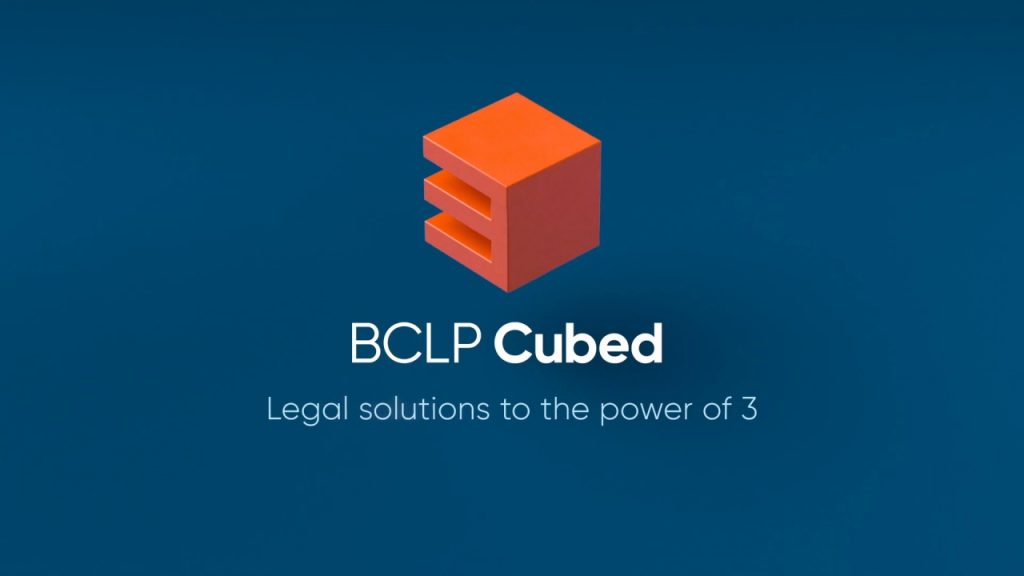
1 – Something about 3
BCLP Cubed and the magic of three
What’s so magical about the number three?
Three Little Pigs, Three Blind Mice and – my favourite – the Three Bears. “Rule of three” is a central tenet of storytelling, and lends a bit of magic in legal tech, too. Information presented as a trio tends to stick in our heads for longer. Think blood, sweat and tears.
The rule of three features in BCLP’s new branding (Cubed. Legal Solutions to the power of 3.) The firm pivots its narrative across three familiar themes: ‘We integrate complex legal advice, volume legal delivery and legal operations support.’ But while other firms package solutions and expertise into three separate buckets (People. Process. Technology) and many (Allen & Overy, Pinsent Masons and Weightmans, to name three) do it in a list, BCLP – by contrast – uses the ‘three’ idea to develop elements of its brand identity (with a name, logo and positioning line). Cubes aren’t unique; but, give BCLP a visual metaphor for internal and external awareness building.
Arguably it’s easier for BCLP, with its new brand, to adopt an approach like this, but others can follow suit. Developing a core idea to illustrate the three elements can elevate any ‘listing’ into something more compelling, campaignable and exciting. After all, tech and innovation are meant to be inspiring, both internally and externally.

2 – Brands round-up
Branding: BigLaw or NewLaw?
Konexo, the alternative legal service provider that’s part of Eversheds Sutherland, has just launched a new website. It draws on the idea of making connections: Konexo as a meeting point between BigLaw (Eversheds Sutherland) and NewLaw (alternative legal services).
There’s also the idea of a ‘meeting of minds’, extended in a series of clever copy lines: ‘Where activity meets creativity’, ‘Where complexity meets clarity’ and ‘Where ability meets agility’. Visually, a pointed graphic shape reinforces the theme. Even so, the tone is distinctly corporate.
More BigLaw than NewLaw?
Talking of tone, Simmons & Simmons has launched its new branding. This one is distinctively NewLaw: the use of colour, typography and imagery (and the concept of murmuration) flies in the face of tradition. It’s all done in modern, contemporary style with messaging around collaboration and smart thinking. The firm’s tech and innovation credentials look comfortable in these new clothes, and it’s easy to see how the newly established Simmons Wavelength will (eventually) look and feel!
The tone of legal tech (jeans, T-shirts and everything cool) was evident at a recent Legal Geeks event. Beers, pizza and high-fives stood in for ties and handshakes. Informality was in the air. As a disrupter, Legal Geeks acts and behaves differently to other events organisers. So too does Crafty Counsel – an online service for in-house L&D, whose green pillar and video format communicate insight and inspiration in equal measure. Both, like Simmons & Simmons, have figured out how to brand for the mobile and digital world.
And, with a new breed of challenger (disrupter) brands pushing the boundaries, conveying a sense of modernity and innovation (while flexing to work across platforms and channels) is key to branding tech and innovation.

3 – Power of EY (and ALSPs)
Acritas highlights growth of EY and ALSPs
Acritas’ recent Global Alternative Legal Brand Index 2019 report reaffirms EY’s rising power in legal. The third Acritas index sees EY Law move ahead of PwC Legal to take the lead. It doesn’t hurt that EY Law has made notable acquisitions and investments in marketing: it’s been the headline sponsor for several keynote conferences and awards programmes. But the power of the Big 4 brands (who occupy four of the top five places) remains evident. Alternative Legal Service Providers (ALSPs such as Elevate, Thompson Reuters and Axiom) have top places too, and other new brands are pushing to join the top ten. Awareness is growing.
Allen & Overy, Clifford Chance and Baker McKenzie stand out in the Index for their innovation, but don’t make it to the top ten. What jumps out is the way new law brands are ‘resonating more strongly in the traditional law firm space’.
As the Index puts it: ‘Lines between a traditional law firm and new law company are becoming increasingly blurred’. In terms of work value and breadth of services, new law companies are broadening their offerings and moving up the food chain. With GCs more open to using ALSPs than before, these providers are overcoming one of the market’s biggest hurdles: getting legal decision makers to turn to an entity that isn’t a traditional law firm. To protect existing relationships and find new areas of growth, traditional firms need to turn up the dial on how they brand and market their tech and innovation.
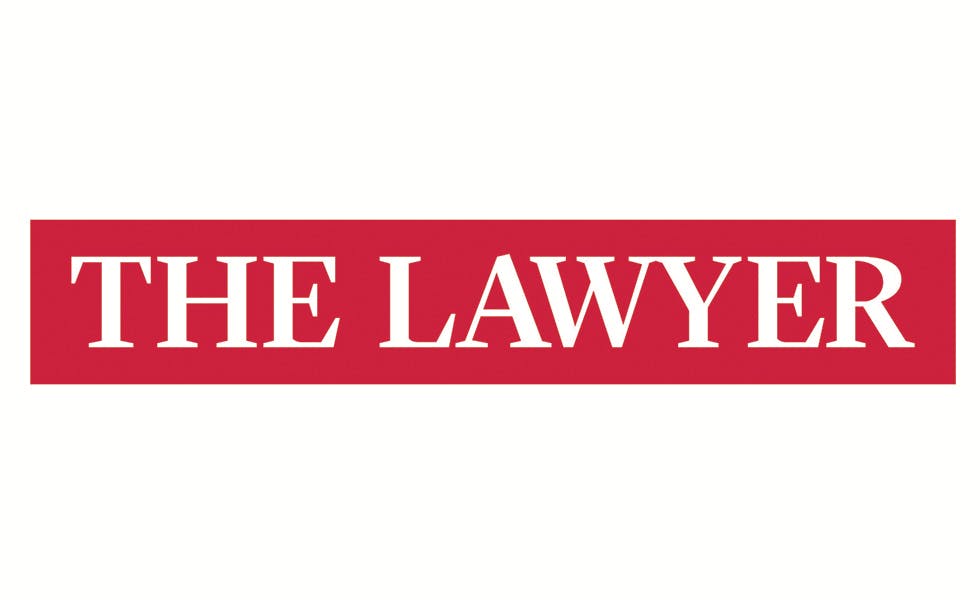
4 – How mid-tier firms are performing
From HFW to Howard Kennedy: how are firms branding tech
Earlier this year, we examined how Top 30 UK law firms are branding tech and innovation. This time, we’re looking at firms 31 (HFW) to 60 (Howard Kennedy)* earning annual fees ranging from £180m to £60m.
These firms are large enough to be focused on efficiencies and providing data insights; big enough, too, to worry about the impact (on clients) of disrupters.
So to the top line results: a staggering 56% (17 firms, including HFW, Gateley and RPC) have no website narrative or content that outline an overall approach to technology and innovation. Nearly a quarter (seven firms, including Mishcon de Reya, Keoghs and Lewis Silkin) mention specific products or solutions but don’t reference an overall approach.
Only a fifth of firms surveyed (Burges Salmon, BLM, Mills & Reeve, Shoosmiths, TLT and Weightmans) have more substantial content. All use the master-brand for branding (as such, adopt more of a corporate tone), except BLM which developed a sub-brand strategy (BLM Innovations, a six-strong portfolio of sub-brands that cover a range of analytics, case management and communication tools).
Two firms standout; and worthy of comment. Shoosmiths and Weightmans.
Shoosmiths combines its resourcing and technology solutions, advisory and software solutions under the name Connected Services, a broad proposition covering more than just tech and resourcing. The firm says it can provide ‘superior client service’.
Weightmans focuses on tech, and does a good job. Its commitment to innovation and artificial intelligence can be found quickly under About Us, while other content outlines insights, awards, media highlights and partnerships. The only thing missing is case studies. Overall, it gives clients a good feel for the firm’s approach.
*(The Lawyer’s top 200 UK law firms, 2019)
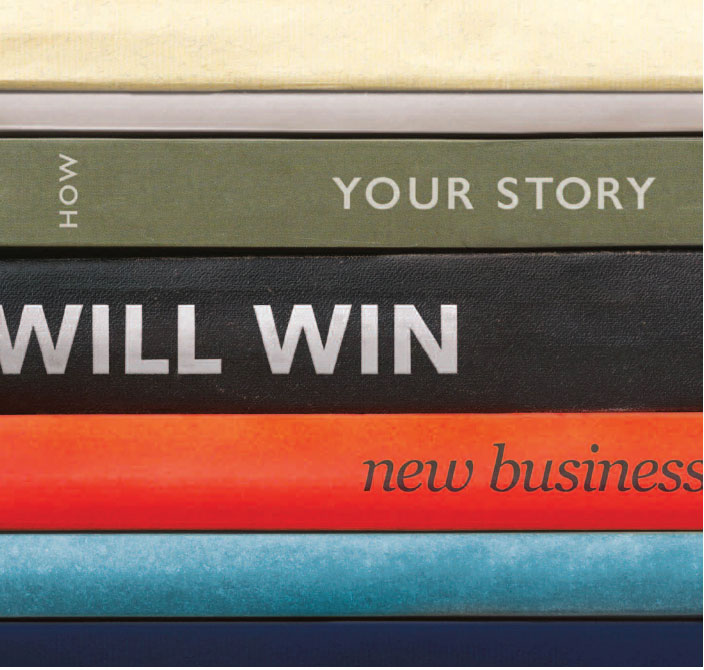
5 – Selling your story
Politicians are now using them: how firms use narratives to sell legal tech
With politicians currently selling their narratives for UK plc. Thought it would be apt to examine what they are, what it takes to create one; and, how firms are using them to sell tech.
As we know, in legal tech, there is an awful lot of sameness: too many firms promising too much of the same thing. Bombarded with competing messages, busy clients and partners crave clarity and direction. That’s why narratives are so important. They provide a GPS for the path ahead.
An overarching narrative creates a template for all other internal and external communications, but surprisingly, most firms (more than half we reviewed) don’t have a narrative on their websites detailing their approach to tech and innovation. Even when firms do venture to articulate propositions, often they lean towards the generic.
For example: “Together with our modern approach to legal project management and the entrepreneurial spirit we’re known for, our solutions are delivering results for clients in speed, quality and value.”
It takes time, talent and boldness to draw out something more compelling, but it’s important – this is what sets the scene.
Linklaters has a corporate narrative that describes its ‘mindset’ and how it’s ‘empowering (its people) to do and think differently’. It pushes this into the area of innovation: ‘Innovation is about doing things differently – unleashing the imaginations of our people to challenge the present and shape the future.’
It also draws on the idea that innovation runs deep.
‘Innovation lies at the core of our purpose of delivering legal certainty in a changing world. It runs through everything we do at Linklaters – our legal advice, the way we deliver our services to clients and the way we run our business. We believe the best responses to the challenges brought about by change, whether commercial, geo-political or cultural, require creative, innovative and collaborative thinking.’
Of course, this is only half the story. Once developed, narratives don’t stand alone. A sentence such as ‘We are an innovative, full-service firm with global capabilities’ won’t compel anyone to sign on the dotted line.
Instead, firms need to give evidence. Powerful phrases begin ‘For example…’
You wouldn’t think that law firms struggle with using hard facts. After all, senior business leaders and partners employ them every single day. But facts are just one type of evidence, and may need bolstering with more emotive language to appeal not just to people’s IQ, but also their EQ. Through a combination of hard facts and descriptive language, stories come alive. Here are four discrete types of evidence:
- Facts: these establish size, scale, and what’s at stake
- Observations: expert marketplace perspective and the issues clients face
- Anecdotes: bringing ideas to life (relevant business stories are even better)
- Metaphors: simile and analogy cut through waffle, creating shortcuts to insight
As mentioned, only a few firms include their tech and innovation narratives (on their websites). Fewer still, combine their facts, observations and anecdotes to tell their own stories. Neither do they use metaphors. Surprising, given the challenge of communicating something as abstract as tech, in an easy to understand and memorable way.
Storytelling, and the art of storytelling is an excellent way for any client facing lawyers and support staff to structure and present their credentials into something more persuasive and compelling. We know a few firms practising storytelling. More should follow to help distinguish themselves in the market.

6 – Selling to sceptical lawyers
How three firms are doing it
Lawyers are busy doing the job, building relationships. Often that leaves little time for much else. Also, lawyers are (in general) sceptical and risk adverse. Many who didn’t grow up with tech feel some ambivalence, so asking them to sell tech services can be a challenge. To give lawyers the confidence to ask the right questions, education, training and support are vital. Each firm has a particular approach, but here are three examples:
1) Eversheds Sutherland has training sessions for all UK partners. These provide basic answers to frequently asked questions, which are useful for taking forward client discussions. Cards are handed out containing, on one side, a typical client question and, on the flip side, the answer. Tips and tricks in their pockets!
2) During an opening workshop at its Innovative Lawyers Forum, Linklaters used actors to bring to life four topical scenarios answering the question: ‘What happens when AI goes wrong?’. Scenarios can help to educate and train, especially when no real life case studies exist. By devising situations lawyers can recognise instantly (while remaining sensitive to needs of different practice areas and geographies), it offers them a toolkit to help create more productive and meaningful client conversations.
3) After A&O developed its proposition for Advanced Delivery, the firm came up with a toolkit to help partners deepen understanding about its range of tech and resourcing solutions. This uses case studies, placemats, tender and pitch content, and storytelling. A&O is one of the firms we mentioned earlier. The firm engaged in storytelling. Helping partners and support staff to structure their content for Advanced Delivery and its tech and resourcing solutions around the three P’s of messaging – promise, proof-point and point of view.
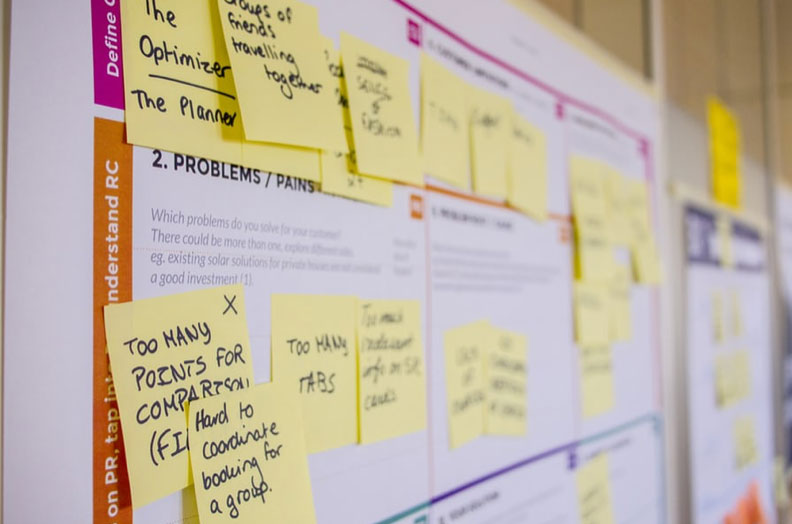
7 – Encouraging innovation
Review of what firms are doing
Getting lawyers and staff to shift to digital technology is a complex, ongoing cultural challenge. When it comes to change, ‘one size fits all’ doesn’t often work. Instead, different approaches suit different individuals. To encourage and drive change, it’s important to bring people together and enable them to talk. Here are a few ideas.
Hackathon
A popular way to foster collaboration and develop new ideas by assembling people from diverse backgrounds, with differing skills, for a short period. Mills & Reeve, for example, held a day’s hackathon to improve its client experience.
In Frankfurt, Ashurst brought 22 student ‘hackers’ together with lawyers and members of its digital and innovation lab to initiate its first hackathon (#AshurstLegalHackathon). Split into four teams, participants built a digital tool prototype over 24 hours, then pitched the result to a team of expert judges.
Make it competitive. Prizes will add to the occasion (and drama!).
Champions
A&O deploys champions to promote tech and support its partners. These people are au fait with the firm’s blend of solutions, and work with practice and sector groups on tenders and pitches. They also help partners take discussions direct to clients.
Other firms go further with the idea. BCLP’s Innovation Champions programme encourages lawyers and support staff to get involved and drive change. This (full time) initiative looks for those passionate about applying new technology, improving processes and understanding data to deliver more effective solutions for clients.
Crowdsourcing
A popular way to source ideas and generate employee engagement. Linklaters, for example, has a technology platform – Ideas Pathway – on which employees can submit and progress their ideas, at any time, from any device. This allows the firm to crowdsource ideas from employees across its global network.
Eversheds Sutherland has IdeaDrop, a platform to capture and curate ideas. Through a mobile and web app, employees across the firm’s 66 offices in 32 countries are encouraged to connect with colleagues around the world to contribute ideas, debate, and find solutions to problems, broadening the pipeline of innovation.
Insurance specialist Kennedy has Ideas Lab, an internal strategy and platform through which any member of the firm can come forward with innovative ideas about how to create future products.
Campaigns
Firms often kick off with a campaign to promote innovation, then elicit ideas before moving to more formalised programmes. At Dentons, ‘Tragic to Magic’ was the intriguing name of a company-wide programme enabling employees to identify pain points and find solutions. This morphed into the full Ideation Platform. Its lawyers from around the world can now generate new ideas and be recognised and rewarded. Burges Salmon held a firm-wide initiative (B-innovative Week) to educate and inspire people to think about new technologies and try new approaches.
Innovation hubs
These can be dedicated spaces that (often) have nothing of the look and feel of a law firm. (Hoodies instead of suits. Pizzas instead of posh.) In gathering lawyers, technologists, support staff, clients and others, the aim is often to catalyse ideas that can solve defined problems, and come up with more efficient ways to deliver legal services.
Clifford Chance says its hub in Singapore (Create+65) ‘drives more innovative, efficient, effective and robust client service delivery’. Reed Smith has meeting spaces in London and New York to support the implementation of innovative internal and client-facing legal services.
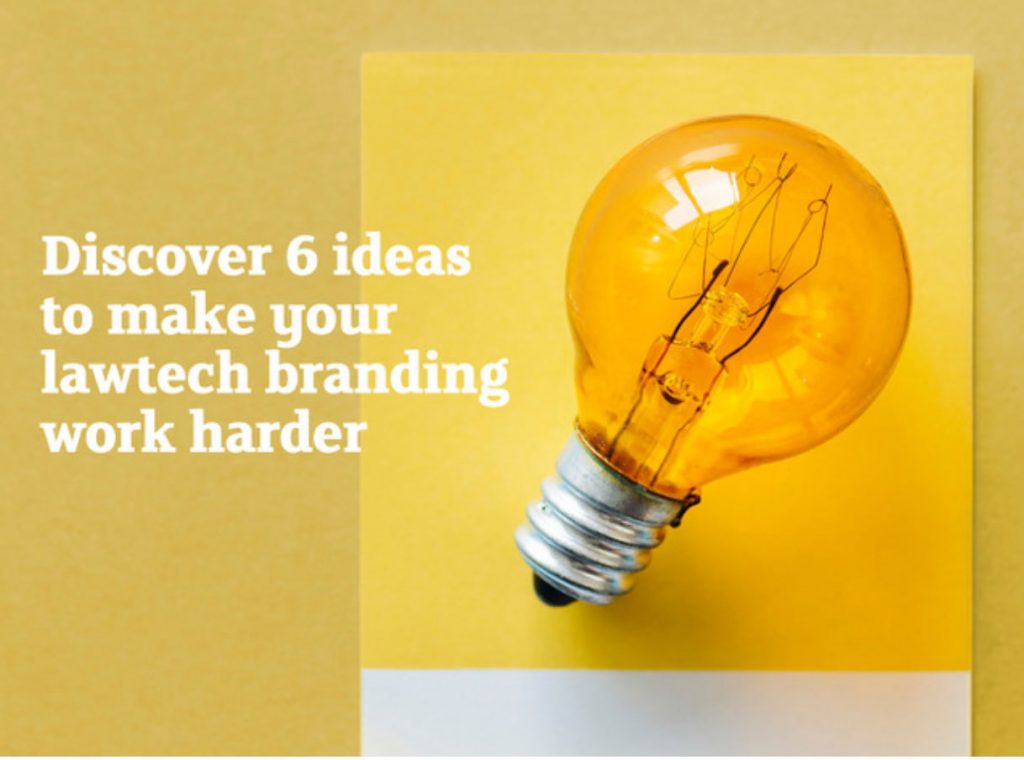
8 – Additional insights
BrandTech
Issue 1.
Report
How the top 30 UK law firms are branding tech and innovation.
Articles
How ‘the other half’ brands tech.
Using innovation to attract graduates.
From confusion to clarity: How to brand innovation in legal services.
9 – Making contact
To discuss any aspects of our insights and capabilities, please contact Grahame Jones:
M: 07961 357 358


